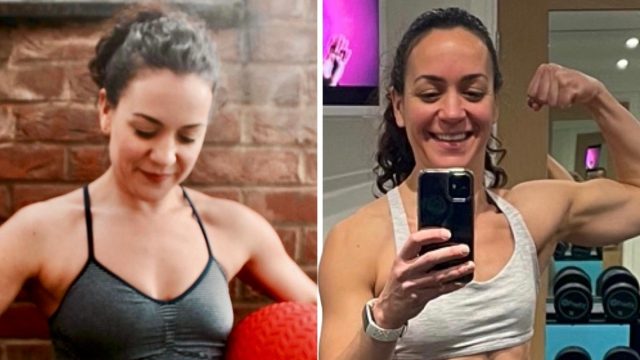Trainer Reveals 5 Dietary Changes to Amp Up Your Protein Intake

Are you falling short of your protein needs? Hannah White is a personal trainer and fitness coach who helps her clients "lose fat and tone up." In a new social media post, she reveals a few of her tricks to ensure she is getting the protein she needs to lose weight. "As a 45 year-old PT, here's 5 ways I've changed my diet to make sure I'm eating enough protein," she writes.
Protein Is Important
"I get asked about protein every day, so let's bring this back again. And as I've stated time and time again, eating enough protein NEEDS to be your non negotiable," she says.
Here Is Why You Need Protein
"It helps maintain your muscle mass while losing fat: The last thing you want to do is lose muscle mass if you want to be fit and healthy," she says. "It helps you build muscle (along with strength training) which is a HUGE plus in your 40s and beyond," she continues. "It increases satiety (feeling full), which can reduce overall calorie intake. It boosts your metabolism, helping you burn more calories, even at rest. It regulates hunger hormones, reducing cravings, encouraging healthy eating habits. It helps with weight management or weight loss (when is a calorie deficit)"
She Increased Protein Portion Sizes
The first thing she does to make sure she gets enough protein? "I've increased the portion sizes of the proteins I was already eating: Aiming for at least 30 grams or a palm ✋ sized portion in each meal (3-4x daily). I also use the @myfitnesspal app to plan & track my daily intake," she writes.
She Starts Her Day with a High Protein Breakfast
"I start my day with a high-protein breakfast: Either protein oats, @fage Greek yogurt, eggs + @twochicksproducts whites, or @mattessons_uk turkey bacon & @heckfooduk chicken sausages with toast & grilled tomatoes," she writes.
She Adds Protein Powder When She Can
Next, she adds protein powder when she can. "I add protein powder to foods & drinks: Things like cereal, oats, yogurts, smoothies, and even coffees (I use @bulk whey isolate chocolate flavour which is 24g per scoop for only 108 calories)" she writes.
She Only Has High Protein Snacks
When she snacks, "I now only have high protein snacks," she writes. "Things like, @babybel.uk light cheese, boiled eggs, Greek yogurt & other high protein yogurts, bars or shakes."
She Prioritizes Lean Meats and Fish
And lastly, she prioritizes lean meats and white fish or seafood in her meals. "Along with adding low fat cheese, egg whites or shredded chicken to up my protein," she says. And if you enjoyed this article, don't miss these 8 High-Protein Foods with Nearly Zero Calories That Melt Fat.




